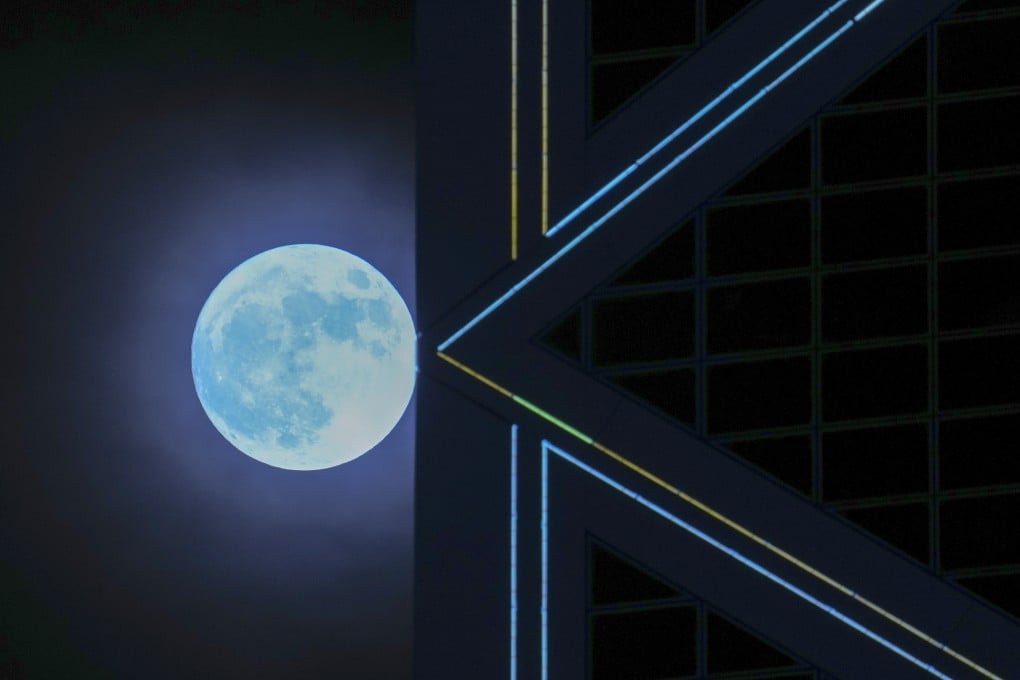Advertisement
Explainer | How and where to see the super blue moon on Thursday – and why they are more common than you might think
- What is going on with the moon this month – and why are some calling it the super blue moon? A professor of astronomy reveals why August 2023 has two full moons
- He tells us where and when to look for the lunar phenomenon, why it appears larger than a regular full moon and what else to look for in the skies that night
Reading Time:2 minutes
Why you can trust SCMP
2

No month is complete without a full moon, but just occasionally there are two.
Advertisement
When a full moon appears over Hong Kong on the evening of Thursday, August 31, it will be the second in the same month, and also the biggest and brightest of 2023. It will also be the only full moon of 2023 without a recognised name.
What is going on with the moon this month – and why are some calling it the super blue moon?
“As the moon’s orbital period around the Earth is 29.5 days, two full moons are possible in a normal month,” says Don Pollacco, professor of astronomy at the University of Warwick in the UK. Since the first full moon in August – the Super Sturgeon Moon – was on Wednesday, August 2, there is time for a second full moon to occur later the same month.

Despite the “once in a blue moon” saying that the phenomenon has spawned, blue moons – those extra ones that do not fit the regular annual naming convention – are not terribly rare, being inevitable about every 2.7 years. That is because a lunar year lasts 354 days, around 11 days shorter than a solar year.
Advertisement

Advertisement